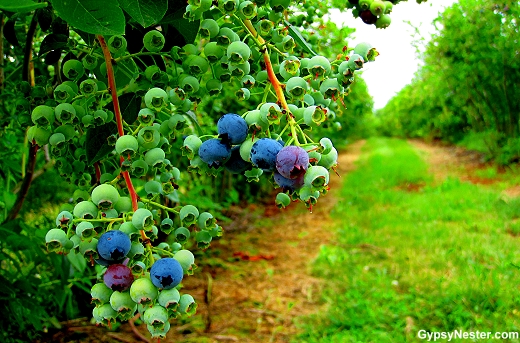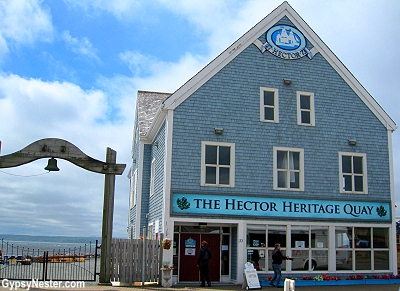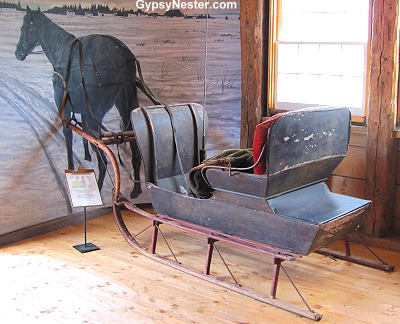Thanks to Road Scholar for providing this lifelong learning adventure through the Canadian Maritimes! As always, all opinions are our own.

Sandwiched between our explorations of Newfoundland, Prince Edward Island, and Halifax we discovered an often overlooked stretch of Atlantic Canada.
The area around the Isthmus of Chignecto, which connects New Brunswick with Nova Scotia, is instrumental in the history of North America and certainly deserved a closer look.
Battle(s) Royale

The strategic strip provided a land route for early French colonials, joining Louisbourg to Quebec, making it a center point of battles for control over eastern Canada between British and French forces.
After King George’s War ended in 1748 with no resolution to the balance of power in North America, France began building Fort Beauséjour in what is now New Brunswick to protect their holdings.

By 1755, the two powers were back at it and the British conquered the fort, effectively cutting New France in half. After renaming it Fort Cumberland, they began deporting all of the French-speaking settlers of the area in the first expulsion of the Acadians.


But that was only the beginning of what came to be known as the French and Indian War.
The perennial enemies fought across vast swaths of the continent, as well as in Europe, for nearly ten years.
Eventually England and her colonies prevailed, becoming the dominant power in North America. In the process, a young Major George Washington established himself as a leader and the rest, as they say, is history.
Tiding Things Over

The isthmus forms the north shore of The Bay of Fundy, so after our history lesson we made a stop to check out the highest tides in the world.
It is common for a high tide at Fundy to rise an incredible forty-five feet or more.

The long, funnel-like shape of the bay opening to the Atlantic creates the giant tidal fluctuations. In a span of just minutes we watched the water rise several feet — it was like watching a bathtub fill up.

See our entire journey through the Canadian Maritimes
Getting Carried Away in Sackville

In the nearby town of Sackville, we passed by the last octagonal house in New Brunswick on our way to the Campbell Carriage Factory.
Dating back to 1855, the site represents one of last surviving pre-industrial businesses in Canada. The main factory building, which became a museum in 2003, is typical of a small nineteenth century shop.
The brief tour gave us a start-to-finish look at the construction of horse-drawn carriages and sleighs.
Everything from the making of the wheels to the final paint job was done on site. By branching out into farm equipment, and even caskets, the factory managed to survive the advent of the automobile and continued business until 1949.
See more about Campbell Carriage Factory Museum
Blueberry Overload
Crossing the isthmus out of New Brunswick, we made our way into Nova Scotia for a look at, and hopefully a sample of, some of the area’s produce.

First up, berries! At Blueberry Acres we found ourselves in the middle of two hundred acres of high bush blueberries, and got an introduction to the enterprise of commercial berries.


While checking out the rows of bushes we about jumped out of our skins when a canon fired in the middle of the field.
We weren’t the only ones jumping, a good sized flock of birds sprung up as well. After a few more rounds went off, we had to ask what was up with the bombardment.
The artillery was not the French and English taking up arms against each other again (whew!), but part of a never-ending battle to keep birds from eating all the profits.
Other weapons include piping in predatory bird sounds (a walk through the bushes sounds like a jungle excursion!) and statues of swooping eagles placed in strategic locations.

Between the Bushes Restaurant is also a part of the complex, situated smack in the middle of the farm, and blueberries are incorporated into many dishes.
We started off with pure, sweet blueberry juice, and then moved on to their signature blueberry barbeque chicken.
Somehow, even with a blueberry dessert, we felt not an inkling of berry overload.

See our entire journey through the Canadian Maritimes
Quit yer Wining!

We went from fruit of the bush to fruit of the vine at the Gaspereau Vineyards. Eight different grape varietals grow on thirty-five acres of hillside that provides the perfect sun and drainage for ideal growing.
After tasting a couple of their offerings, we agreed that ideal growing makes ideal wine.

For a change of pace, and something quintessentially Canadian, we had to try their maple wine. Interesting, unique, but… maybe it would go better with a pancake supper.

Returning to our historic explorations, we stopped in Pictou to see the Hector Heritage Quay.
Nova Scotia means New Scotland in Latin, and Hector is famous for being the ship that brought the first significant group of Scottish settlers in 1773.

The quay, or dock, commemorates the event with a museum that chronicles the Scots fleeing the Highland Clearances in Scotland and making the arduous journey across the Atlantic to start new lives.
A perfect replica of the ship, made from the original blueprints, highlights the exhibit.


We started with a look through the displays about the ship and stalwart settlers that made the crossing.
Passenger lists and scores of tartans representing the clans of the families line the walls of the museum, allowing many Nova Scotians to trace their roots.
We found the plaid for the Stewart clan, Veronica’s maiden name, so perhaps a relative was on board?


After a brief film, we went aboard The Hector and got a small sample of just how crowded two hundred people would be on a one hundred foot ship.
In the holds there was only room for one bunk per family, so everyone had to take turns sleeping. Because of a horrific storm, the trip that should have lasted six or seven weeks ended up taking eleven, and eighteen passengers died at sea.


Unlike those brave souls centuries ago, we could hop off whenever we wanted, so we disembarked for a walk around the town.
First we checked out the crafts fair at New Caledonian Curling Club, which happens to be the third oldest curling club in Canada.
Then we followed signs marking the historic buildings around town.

Our favorite had to be the old post office, built in 1895, which claims to be “the only building in the world with a window in it’s (sic) chimney.”
Perhaps they wrote that claim before the days of Google, because a quick search revealed that they have some competition for the title.
However, one fact is indisputable.
Why would anyone want one?
David & Veronica, GypsyNester.com
Delve Deeper:
Check out the Campbell Carriage Museum
What else is in Nova Scotia you ask?
Explore more of beautiful New Brunswick
See our entire adventure in The Canadian Maritimes
See all of our adventures in Canada
Thanks to Road Scholar for providing this lifelong learning adventure through Prince Edward Island, Nova Scotia and New Brunswick! As always, all opinions are our own.






I like the article
Very interesting post and pictures with many intriguing tidbits. I love the history in all of this. Thank you for sharing this!
Thanks Vanessa!
Enjoyed all the info tidbits. I spent time in New Fundland when I was in the USCG but am ashamed to say I didn’t do much more than Pub sightsee. I would have loved to have visited the Blueberry fields.
Thanks Dennis! We had a great time.
You guys really do get everywhere! I’ve never heard of the Isthmus of Chignecto but the photos of the blueberries (and green fields) make me want to go! Great post.
Not very well known, but it played a huge roll in North American history.
Veronica,This is my old stomping grounds. I lived for years in the CiChignecto area, went to Mount Allison University in Sackville. I’ve blueberry picked at bluebrry acres and had lunch at in the bushes. I love Gaspereau Vineyards wine except for the maple wine which was the only one to end up in the spitoon. I’ve even been caught in the Fundy Tides at Parrsboro when crossing what was a sand bar when we started and up to my neck before we got to the shore ten minutes later.
Thanks for the memories.
Wow, great! Glad we could bring you a taste of home.